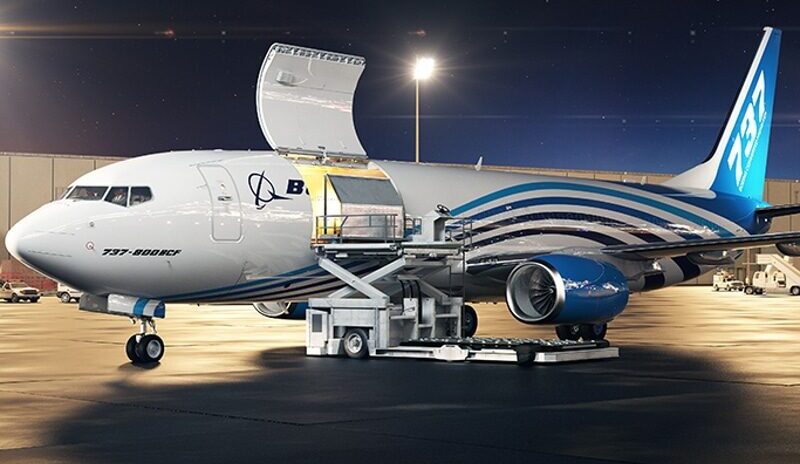Aerospace
Boeing Forecasts Air Cargo Traffic to Increase Twofold Over Next 20 Years
Boeing Forecasts Air Cargo Traffic to Increase Twofold Over Next 20 Years

Boeing anticipates significant demand for air cargo services until 2041, with traffic doubling and the global fleet of freighters increasing by more than 60%. Boeing published information from its 2022 World Air Cargo Forecast (WACF), a biannual in-depth analysis of evolving market dynamics.
Boeing Forecasts Demand for More than 41,000 New Airplanes by 2041(Opens in a new browser tab)
The world’s cargo fleet would need close to 2,800 newly produced and converted freighters for expansion and replacement by the year 2041, according to the 2022 WACF. In order to satisfy demand, operators will need to move to more capable, fuel-efficient, and sustainable jets like the 777-8 Freighter, according to the Boeing prediction, since cargo volume is expected to double during the projected period.
New production freighters will make up one-third of deliveries, while the remaining two-thirds will be freighter conversions, like the 737-800 Boeing Converted Freighter (BCF), giving carriers more flexibility in both mature and developing markets.
Boeing Delivers on 100th 737-800 BCF Order to AerCap(Opens in a new browser tab)
The 2022 WACF also provides these insights about the cargo market through 2041:
- The Asia-Pacific region will take delivery of nearly 40% of all freighters, including new and converted freighters.
- While dedicated freighters are 8% of the total commercial airplane fleet, they continue to carry more than half of all air cargo, with passenger airplanes carrying the remainder as belly cargo.
- The global freighter fleet will grow by more than 1,300 airplanes to more than 3,600 jets over the next two decades.

Aerospace
Boeing Transfers Rocket Stage to NASA, Paving Way for Human Moon Mission

Boeing has achieved a significant milestone by providing NASA with the second core stage of the Space Launch System (SLS) rocket.
This crucial component, crafted at NASA’s Michoud Assembly Facility (MAF), is set to propel the Artemis II crew into lunar orbit, marking humanity’s return to deep space after a 50-year hiatus.
The monumental Boeing-built rocket stage, the largest element of the Artemis II mission, will embark on a journey aboard the Pegasus barge, traveling 900 miles to NASA’s Kennedy Space Center.
Comparison of two legendary aircraft B777x vs B747 aircraft:Click here
Upon arrival, it will be meticulously integrated with other essential Artemis II components, including the upper stage, solid rocket boosters, and NASA’s Orion spacecraft within the iconic Vehicle Assembly Building. This intricate integration process is a vital step toward the eagerly anticipated Artemis II launch, slated for 2025.
“Boeing-built products helped land humankind on the moon in 1969, and we’re proud to continue that legacy through the Artemis generation,” remarked Dave Dutcher, vice president and program manager for Boeing’s SLS program. “Together, with NASA and our industry partners and suppliers, we are building the world’s most capable rocket and paving the way to deep space through America’s rocket factory in New Orleans.”
NASA, Lockheed Martin Reveal X-59 Quiet Supersonic Aircraft:Click here
The delivery of Core Stage 2 marks a significant achievement in the evolution of the SLS rocket. Towering over 200 feet and powered by four RS-25 engines, this core stage, coupled with two solid-fueled booster rockets, will generate a staggering 8.8 million pounds of thrust. This immense power is crucial to launching Artemis II and future missions into the vast expanse of space.
The SLS rocket stands unparalleled in its capability to transport both crew and substantial cargo to the moon and beyond in a single launch. Its extraordinary capacity will facilitate the delivery of human-rated spacecraft, habitats, and scientific missions to destinations including the moon and Mars, ushering in a new era of space exploration.
-

 Travel1 week ago
Travel1 week agoAir India to Expand US Operations with Three New Routes After a Decade
-

 Travel2 weeks ago
Travel2 weeks agoWhy We Should Avoid These Stamps in a Passport
-

 Airlines1 month ago
Airlines1 month agoInvestigations Reveal Fake Chinese Titanium in Boeing and Airbus Jets
-

 Tech4 weeks ago
Tech4 weeks agoChina’s CATL Plans 1,800-Mile Electric Plane Launch by 2027
-

 Airport3 days ago
Airport3 days agoTop 10 Largest Airports in the World by Size
-

 Aerospace4 weeks ago
Aerospace4 weeks agoChina’s Fighter Jets Turn Wings into Autonomous Drones
-

 Airlines4 days ago
Airlines4 days agoAir India Rolls Out A350s for Delhi-New York JFK and Newark Routes
-

 Defence3 weeks ago
Defence3 weeks agoBoeing Enhances Chinook with New Engines and Block II Upgrades at $96 Million







